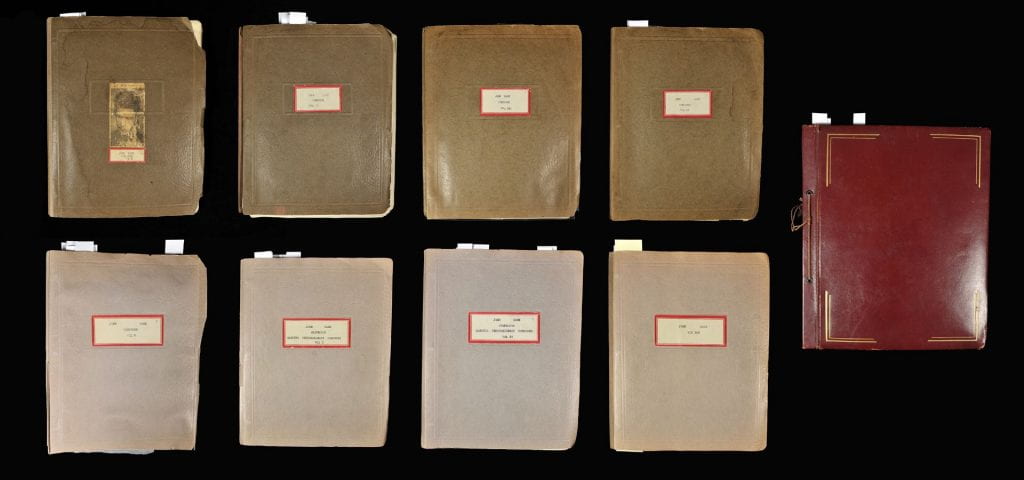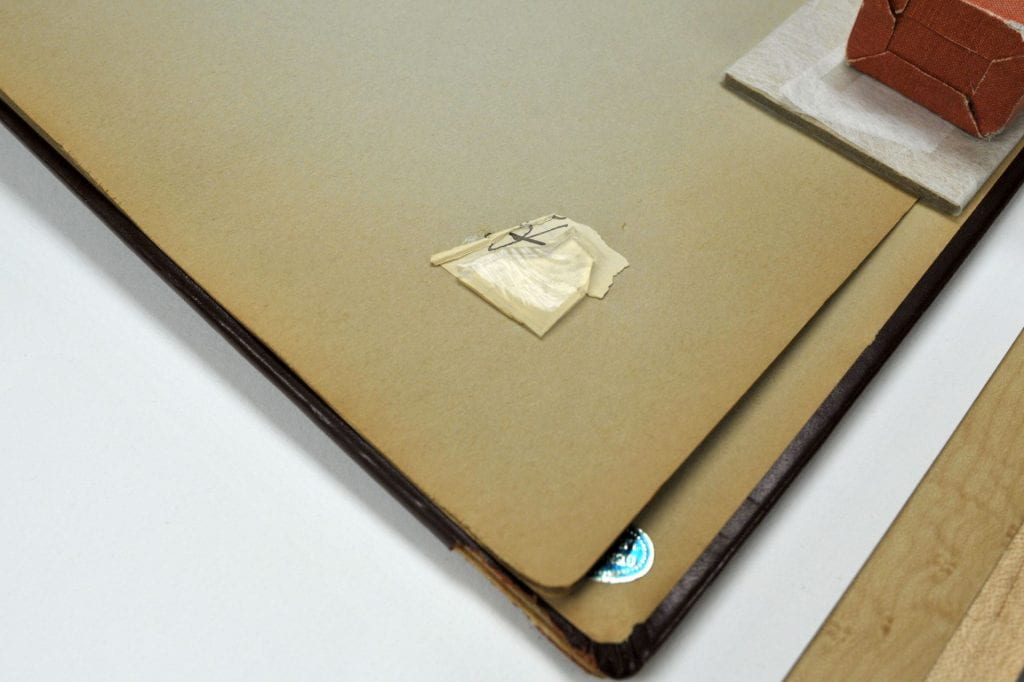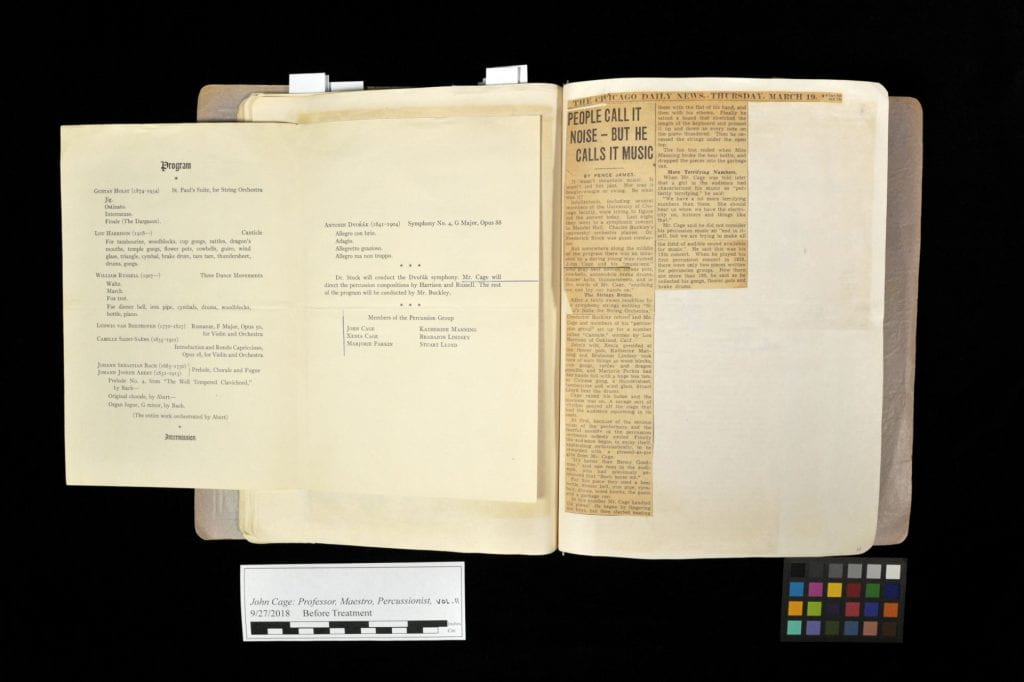From August 8 to 11, Northwestern hosted “Dancing in Common,” the annual conference of the Dance Studies Association. In conjunction with the conference, the Libraries exhibited dance-related materials from our extensive John Cage collection for the 500 dance scholars in attendance. The exhibit, “Less Like an Object and More Like the Weather: John Cage & Dance,” now lives on digitally after the end of the conference. The installation gave us conservators at Northwestern Libraries a chance to revisit this premier collection, and ensure that the objects on display were properly cared for, readied for digitization, and preserved for future study.
Some of the materials on display in the exhibit were reproductions from the John Cage Scrapbooks. This is a group of nine scrapbooks compiled by Cage’s mother, Lucretia Cage, spanning Cage’s childhood through his early professional career, roughly 1916 to 1954. Included are photographs, correspondence, news clippings, and performance ephemera, much of which pertain to Cage’s partnership and collaboration with dancer and choreographer Merce Cunningham.

The nine volumes of the John Cage Scrapbooks.
The Cage Scrapbooks underwent digitization in winter of 2018. A significant amount of pre-digitization conservation treatment was needed to enable our Repository and Digital Curation team to capture all of the information held in their complex structures.
Nearly all of the scrapbooks’ ephemera are adhered to the pages. Many of these items—flyers, programs, and even poems written by Cage in his childhood—include text on their adhered surfaces. Some damage had been caused over the years by curious researchers trying to lift these items to read the text hidden on the other side. Prior to treatment, a curatorial team flagged the items that needed to be removed from the pages for imaging.
Lucky for the conservator, Mrs. Cage was consistent and light-handed in her scrapbooking practices. Even luckier was the era in which these scrapbooks were compiled—the common household adhesives of the time were still largely animal-based and, sixty years later, easily reactivated with water. Had the scrapbooks been made a decade later, the glues would likely have all been synthetic, and the work would have been much more difficult.
After disassembling the scrapbooks, gellan gum (see the blog post on our Gellan Gum Workshop to learn more) was used to gently and precisely humidify the adhered areas of the ephemera and loosen them from the pages.

Gellan gum can be sliced to the precise shape of the adhered area for humidification. Here it is used to remove the corner of a damaged handwritten letter. The fragment was then reattached to the letter.
One of the scrapbooks, colloquially known as the “Cruise Scrapbook,” documents Cage’s 1949 European tour. Most of the contents are letters sent home to his parents. These had to be removed from their envelopes and flattened prior to digitization.

Correspondence pieces from the “Cruise Scrapbook” were flattened and protected in polyester sleeves.
As the digitization process wraps up, the scrapbooks have been undergoing more extensive treatment in the lab. All items that were removed from the pages are being reattached—sometimes using the original adhesive (again reactivated with gellan gum), and sometimes with newly added hinges of Japanese paper to enable researchers to access all surfaces.
The paper used in the scrapbooks is brittle, and a significant amount of mending and reinforcement is required to prevent further damage. The paper covers used on eight of the nine books have also required repair, which is done using toned Japanese tissue and wheat starch paste. Following mending and cover repair, the scrapbooks are reassembled.
After treatment, the scrapbooks will all receive new protective enclosures, with all loose items stored in polyester sleeves. Now that a high-quality digital version of the scrapbooks is available for researchers, the originals will undergo less handling and last longer for future users.

















